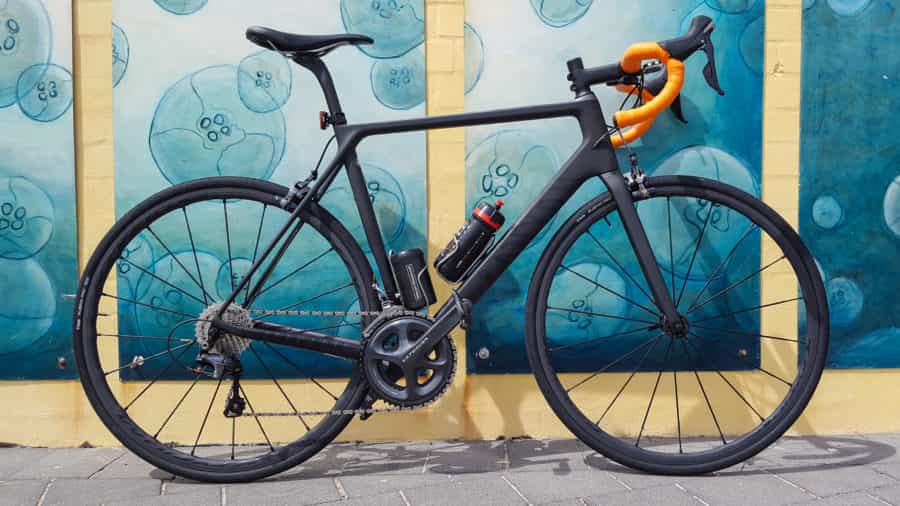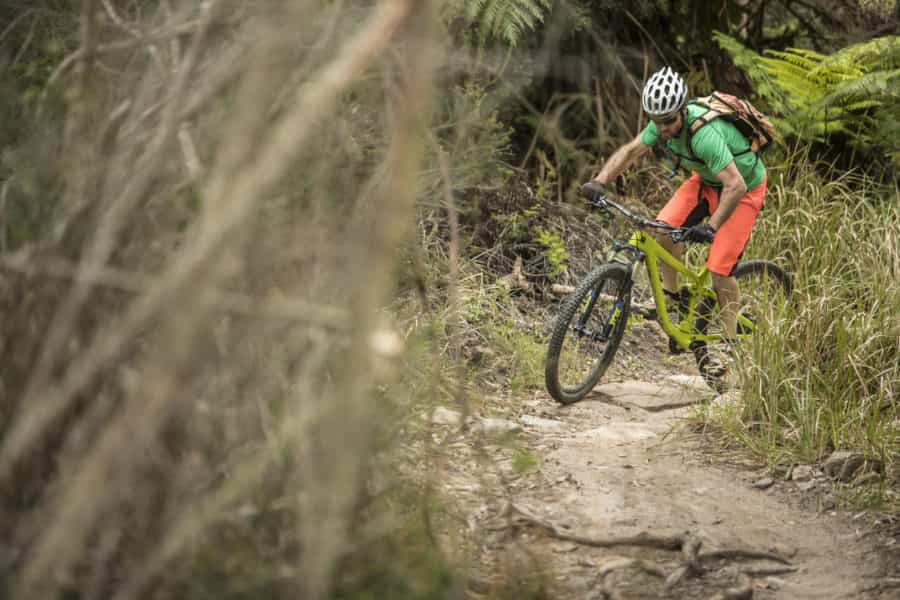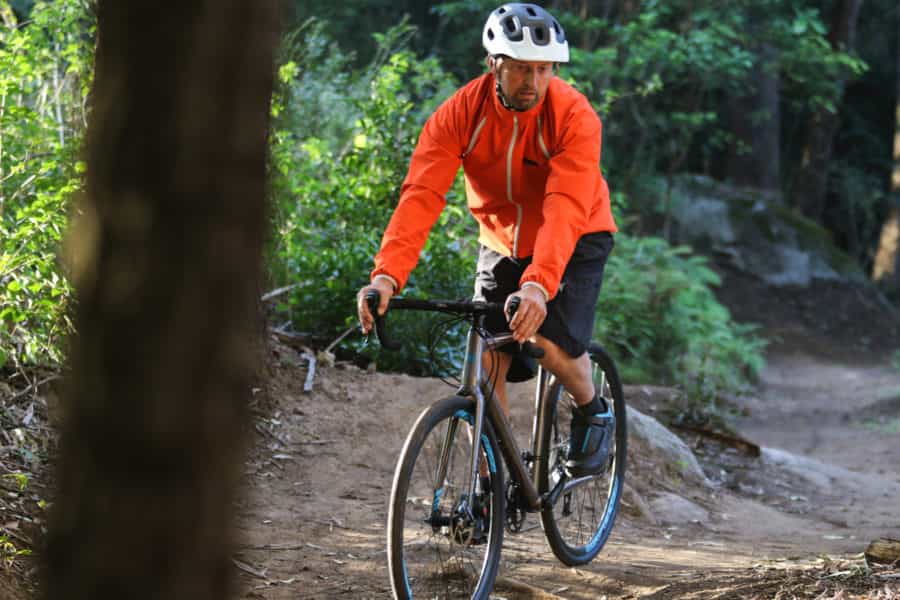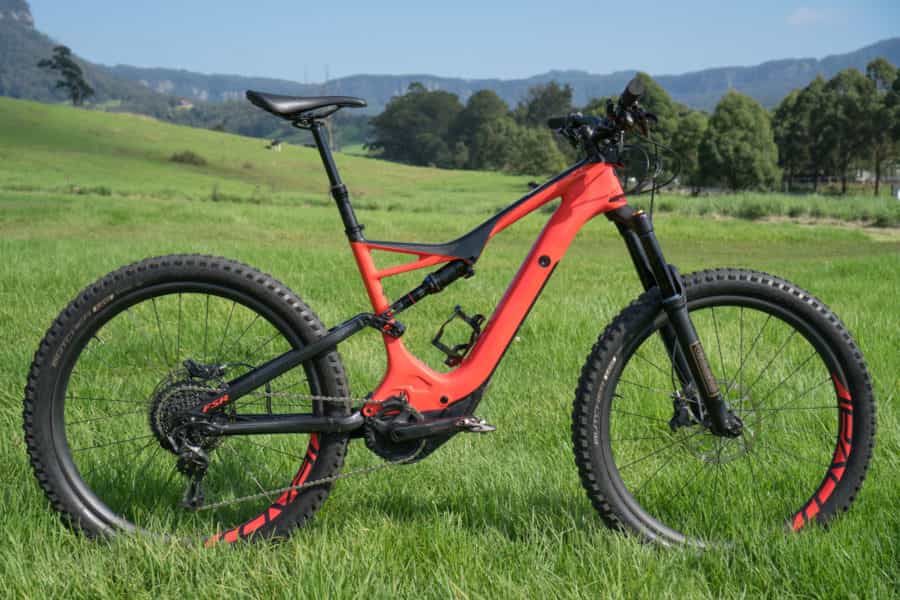Cycling Central

1. Road cycling
What is it?
Road riding is probably the most easily understood discipline of cycling – we see them in their natural habitat all the time! Born not long after the invention of the first bicycle in the early 1800s, road cycling has always been at the more competitive end of the bicycle spectrum. The form-fitting Lycra, the drop-style handlebars and the skinny tyres all pay homage to the speed and focus of a typical road rider – not to mention those classic bikes of the 1920s and ’30s.
What kind of bike do I need?
While pretty much any bike can be ridden on a road, a proper road bike is a lot more than your average weekend cruiser. Modelled on the machines that are ridden at superhuman speeds over insane distances in mass start races from the hills of Adelaide to the vineyards of France, a typical road bike is incredibly light, very efficient and amazingly adept at covering big distances.
A full-size machine can weigh as little as six kilograms, while its tyres are no more than 28mm wide – which is a big jump from the 19mm wide version of only a few years ago. Gearing is tall, meaning that while a typical road bike can cover vast distances over moderately rolling terrain, big inclines can be challenging for the average rider.
If you’re looking at buying a road bike, a decently light machine from a well-known brand with good quality components won’t leave you any change from $2000. Stepping up from there will net a bike that’s both lighter and stronger, and the $3500-4000 region is packed with amazingly good machines. If your tastes run higher than that, then the sky is the limit. We saw a customised Canadian-made road bike on a bike shop floor recently for the eye-watering sum of $17,000…
Where’s the best place to ride?
Within Australia, the popularity of the Tour Down Under in January each year has fostered an incredible road riding scene in around the city of Adelaide in South Australia. The roads are wide and easy to ride, the terrain is stunning and the post-ride food and drinks are nothing short of amazing.
Online services like Ride With GPS also offer a great way to find routes around your local area.

2. Mountain biking
What is it?
Born of pot-smoking Californian motocross bums of the 1970s looking for the next big thrill, the sport has graduated from butchered beach cruisers to electronic suspension, self-dropping seatposts and carbon-fibre wonder bikes that can cost more than a good car.
The sport is enjoying a resurgence of sorts, too, as governments around the country finally wake up to the notion of adventure tourism, while myriad trial building experts ply their trade from Queensland to Tasmania and everywhere in between.
What kind of bike do I need?
Like the rest of the cycling world, the mountain bike (MTB) morphed from a general purpose bike into something very specific to the task of riding over dirt, gravel, tree roots and rocks. Broadly speaking, there are two streams of bike – the cross-country bike and the gravity bike. As its name suggests, the cross-country (XC) bike excels at carrying its rider over long distances, thanks to its lighter weight, more reactive handling and its ability to scale huge climbs and rail down long descents.
Gravity bikes, on the other hand, are less fun to ride up hill, due to their heavier weight, more aggressive tyres and relaxed frame angles. However, overcome these obstacles with either a chairlift or a shuttle service to the top of a mountain, and the gravity bike’s longer suspension travel, bigger brakes and inherent stability thanks to those relaxed frame angles means you can carry huge speeds downhill.
There are plenty of bikes that intersect with both usage graphs, of course, and it’s possible to give a XC machine some gravity traits by changing tyres and suspension parts, or rein in a gravity beast by changing a few parts to suit a particular terrain type.
Mountain bikes are not cheap. It’s possible to buy a $1500 MTB, but you’ll soon wish you spent more on a model with front and rear suspension, better parts and a lower weight. While $4000 sounds a lot, it opens up more options across the spectrum to pick the bike that best suits your riding style.
Where’s the best place to ride?
Mountain bike parks offer the advantage of well groomed trails and obstacles, with the added advantage of knowing someone will stumble across you sooner or later if you crash and are unable to ride out. Some of the best riding in the world is in a park-style area known as Blue Derby, near Launceston in Tasmania, while similar riding areas are starting to pop up in other states.
On the other hand, exploring new trails is part of the fun of the sport. A great app called Trailforks opens up a whole new world of dirt you never knew existed – and even trails in your own back yard.

3. Gravel/adventure/touring
What is it?
It’s actually not that long ago that a bike was just that… a bike. In a world of no automobiles, it was a tool of transport, a daily connection to the world outside and a vital part of transport infrastructure. With the advent of the car, the bike became a leisure item… but the freedom provided by the bike still burns brightly.
Touring bikes came to prominence in the 1970s, and although modelled on sporting road bikes of the day, featured a more heavy-duty construction, stronger brakes and a relaxed geometry to easily cover longer distances.
The cyclocross bike, meanwhile, was devised as a way for European riders to train throughout the winter months by racing lightly modified road bikes over muddy paddocks.
The touring bike has largely faded into history, while the pure cyclocross racer still exists at the pointy end of the retail spectrum… but the best of both bikes lives on in the souls of the gravel and adventure bikes. What’s the best way to think about these bikes? Well… they’re just bikes.
What kind of bike do I need?
For the sake of argument, the modern gravel bike and adventure bike can be regarded as basically the same thing. Based around a road-style frame with drop handlebars, the gravel/adventure bike differs from its road-going cousin by way of wider, stronger wheels, better quality brakes (usually disc) and different, more relaxed handling characteristics.
Again summarising a bit, a road bike is like a thoroughbred race horse; it’s fast and nimble, but it can be nervous and flighty. A gravel/adventure bike, meanwhile, is like a faithful brood mare; it’s compliant, comfortable, and can carry a load, at the expense of a bit of speed.
A typical adventure/gravel bike will generally sport an aluminium frame, which is both affordable and durable, while it’ll offer disc brakes that can stop far more quickly than the old-style road side-pull brakes, especially in inclement weather. It will offer mounting points for accessories like luggage racks to allow it to be used as a pack horse, as well as a wide gear range to better tackle hills.
A good adventure rig starts around $1700, with excellent bikes for sale at around the $3000 mark. We’d recommend steering away from a carbon adventure bike; alloy is more durable and cheaper to repair or replace if damaged. Equally, custom-built cromoly steel or even titanium frames give the rider a more comfortable, compliant ride and, in the case of steel, it can be repaired anywhere a welder can be found – making it ideal for around-the-world touring missions.
Where’s the best place to ride?
The world is literally your oyster. Australia, for example, still has 600,000km of unsealed roads, so if gravel riding is your desire, you’re well catered for.
Even entry-level adventure bikes can be put to good use as overseas tour machines. Riding across Vietnam, for example, is a worthy adventure, with plenty of tourism operators on hand to help with planning and logistics.

4. E-bikes
What is it?
E-biking has slowly burbled up to the surface in recent years, and refers (mostly) to electrically assisted bikes (known as pedalec bikes) that are limited by Australian Design Rules to a certain performance level.
Leaving aside pedalec commuter machines, the big growth in e-bikes has been in the area of mountain bikes, or e-mtbs. Almost every major manufacturer has one or two on fleet, while all of them will have them in 2020.
And if you’re dismissive of the idea, just think that we used to get up off the couch to change TV channels once, too!
What kind of bike do I need?
The e-mtb is still in its infancy, but there are already plenty of bikes and electric assistance systems to look at – and it’s worth noting here that there is arguably no safe, easy or convenient way to convert a normal bike into an e-bike.
An e-mtb uses a small electric motor down near the bike’s cranks to send no more than 250 watts into the pedals arms. That motor is fed by a rechargeable lithium-ion battery, which is often worked to fit into the downtube of the bike’s frame to give it a maximum range of somewhere between 50-100km, depending on the size of the battery, how much climbing is performed and even how cold the day is.
The electric system only works when the cranks are turning; there’s no throttle to pin!
The motor is quite hefty, and it throws out a lot of torque, so frames need to be built more strongly to handle the loads. As well, components are also beefed up to handle more weight, torque and speed, which all adds up. A typical mountain bike weighs around 14-15kg, while an e-mtb is 22-25kg on average.
E-mtbs come in hardtail (rigid rear end, suspended front end) or dual suspension styles, and we’d recommend the latter if you plan to ride off-road. It makes things far more comfortable, and because you’re travelling more quickly, you’re hitting bumps a lot faster!
Think of an e-mtb as a way to get to the top of your favourite hill a lot faster; the electric assistance cuts out at 25km/h, and it’s actually advisable to turn your assistance level down to its lowest level on the way down the hill. Not only does it conserve the battery, but the extra torque could kick in at the wrong time if you’re pedalling through a slower corner, pushing you towards the outside of the turn.
Where’s the best place to ride?
An e-mtb opens up a whole new world of possibilities… but there are instances around the world where trail operators are banning e-mtbs because of a misguided view that they are motor bikes, rather than assisted bicycles. We reckon that an e-mtb causes no more adverse effects on trail networks than a pedal bike, despite the extra weight, and thankfully Australian trails are largely free of such restrictions.

Grab your copy of Aus Geo Adventure mag here.

